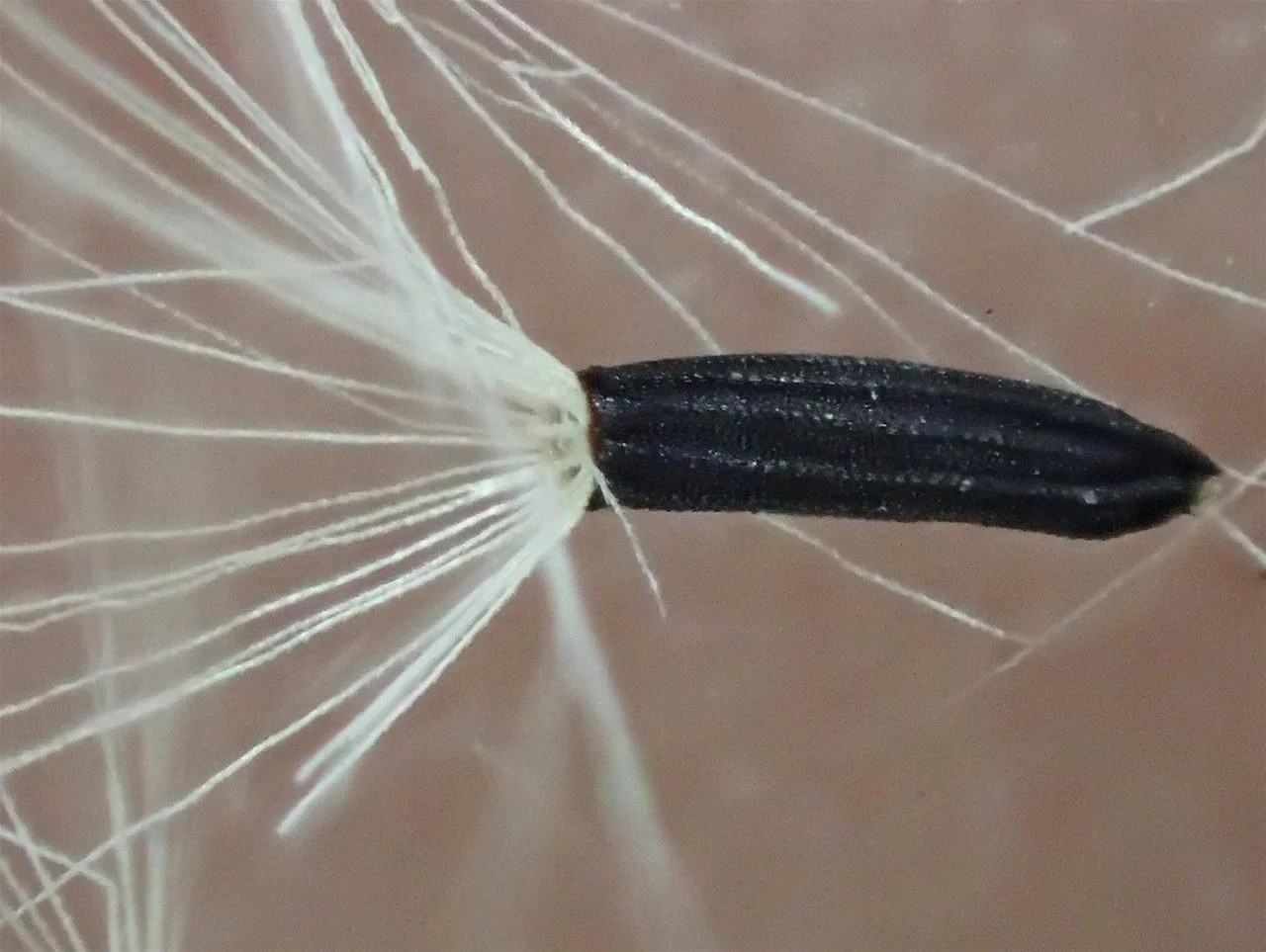
Author: (Vill.) Soják
Bibliography: Preslia 43(2): 185 (1971)
Year: 1971
Status: accepted
Rank: species
Genus: Pilosella
Vegetable: False
Observations: Europe to Iran
The Glaucous king-devil, scientifically known as Pilosella piloselloides, is a fascinating plant belonging to the Asteraceae family. Its botanical journey, meticulously documented in Preslia (volume 43, issue 2, page 185, 1971) by the authority Soják, reflects its resilient and adaptive nature.
This perennial herb is notable for its widespread habitat, ranging across various regions from Europe to Iran. The Glaucous king-devil thrives in a variety of environmental conditions, showcasing its adaptability and tenacity. The plant is easily identifiable by its glaucous, or greyish-blue, appearance, a characteristic that not only adds to its unique charm but also aids in its identification in the wild.
As a member of the diverse Asteraceae family, Pilosella piloselloides shares many common features with its relatives, including its flowering patterns and structural morphology. The plant’s inflorescence typically consists of numerous small, yellowish flower heads, which are a common trait within this botanical family. These vibrant flowers not only attract pollinators but also contribute to the ecological health of their native regions.
In terms of growth habits, the Glaucous king-devil often forms dense clumps, spreading through both seeds and vegetative means such as stolons. This growth strategy enables it to colonize new areas effectively, sometimes leading to its recognition as a hardy and sometimes invasive species.
Understanding the journey of Pilosella piloselloides from Europe to Iran unveils a narrative of survival and spread through diverse climatic zones, from temperate to arid regions. This geographic distribution highlights the plant’s ability to adapt to different environments, making it a subject of interest for botanists and ecologists alike.
In summary, the Glaucous king-devil, Pilosella piloselloides, integrates itself into the environmental tapestry from Europe to Iran, representing the dynamic and widespread nature of the Asteraceae family. The detailed account by Soják in Preslia acts as a cornerstone for understanding this plant’s enduring presence and ecological significance.
Fra: fausse piloselle, épervière fausse piloselle, épervière des florentins, épervière fausse-piloselle
Deu: florentiner mausohrhabichtskraut, florentiner habichtskraut
Eng: glaucous king-devil, king-devil, king-devil hawkweed, smooth hawkweed
Pol: jastrzębiec wysoki
Sqi: këmashën leshatake
Ita: sparviere fiorentino
Bul: влакнестоподобна румянка
Ron: вултурикэ ыналтэ
Ukr: нечуйвiтер стрункий
Nld: grijs havikskruid, grijs havikskruid subsp. bauhinii, grijs havikskruid subsp. praealtum
Nob: snausveve
Nno: snausvæve
En: Glaucous king-devil, King-devil, King-devil hawkweed, Smooth hawkweed, Tall Hawkweed
Sq: Këmashën leshatake
Be: Ястрабок фларэнтыйскі
Bg: Влакнестоподобна румянка
Nl: Grijs havikskruid, Grijs havikskruid subsp. bauhinii, Grijs havikskruid subsp. praealtum
Fr: Fausse Piloselle, Épervière fausse piloselle, Épervière des Florentins, Épervière fausse-piloselle
De: Florentiner Habichtskraut, Florentiner Mausohrhabichtskraut
It: Sparviere fiorentino
Nb: Snausveve
Nn: Snausvæve
Pl: Jastrzębiec wysoki
Ro: Вултурикэ ыналтэ
Uk: Нечуйвiтер стрункий
: Tall hawkweed
Taken Aug 14, 2016 by Tela Botanica − Yoan MARTIN (cc-by-sa)
Taken Aug 14, 2016 by Tela Botanica − Yoan MARTIN (cc-by-sa)
Taken Oct 2, 2020 by Werner Rom (cc-by-sa)
Taken Oct 19, 2021 by Jacques Zuber (cc-by-sa)
Taken Oct 2, 2020 by Werner Rom (cc-by-sa)
© copyright of the Board of Trustees of the Royal Botanic Gardens, Kew.
© copyright of the Board of Trustees of the Royal Botanic Gardens, Kew.
© copyright of the Board of Trustees of the Royal Botanic Gardens, Kew.
Taken Jan 1, 1800 by Tela Botanica − Thierry Pernot (cc-by-sa)
Taken Jan 1, 1800 by Tela Botanica − Thierry Pernot (cc-by-sa)
Taken Oct 2, 2020 by Werner Rom (cc-by-sa)
Taken Oct 19, 2021 by Jacques Zuber (cc-by-sa)
Taken Oct 2, 2020 by Werner Rom (cc-by-sa)
Taken Jun 10, 2017 by Yoan MARTIN (cc-by-sa)
Taken Jan 1, 1800 by Tela Botanica − Thierry Pernot (cc-by-sa)
Taken Jun 10, 2017 by Yoan MARTIN (cc-by-sa)
Taken Jun 10, 2017 by Yoan MARTIN (cc-by-sa)
Taken Jun 10, 2017 by Yoan MARTIN (cc-by-sa)
Taken Jan 1, 1800 by Tela Botanica − Thierry Pernot (cc-by-sa)
Taken Aug 14, 2016 by Tela Botanica − Yoan MARTIN (cc-by-sa)
Taken Jan 1, 1970 by Photoflora – L’Abbé COSTE (©)
Taken May 15, 2015 by Photoflora – Jean-Luc TASSET (©)
Taken Jun 10, 2017 by Yoan MARTIN (cc-by-sa)
Taken Jun 10, 2017 by Yoan MARTIN (cc-by-sa)
Taken Jun 10, 2017 by Yoan MARTIN (cc-by-sa)
Taken Jun 10, 2017 by Yoan MARTIN (cc-by-sa)
Taken Jun 10, 2017 by Yoan MARTIN (cc-by-sa)
Taken Jun 10, 2017 by Yoan MARTIN (cc-by-sa)
Taken Aug 14, 2016 by Tela Botanica − Yoan MARTIN (cc-by-sa)
Taken Aug 14, 2016 by Tela Botanica − Yoan MARTIN (cc-by-sa)
Growth habit: Forb/herb
Bloom months: [‘jun’, ‘jul’]
Family: Myrtaceae Author: (F.Muell.) K.D.Hill & L.A.S.Johnson Bibliography: Telopea 6: 402 (1995) Year: 1995 Status:…
Family: Rubiaceae Author: Pierre ex A.Froehner Bibliography: Notizbl. Bot. Gart. Berlin-Dahlem 1: 237 (1897) Year:…
Family: Sapindaceae Author: Koidz. Bibliography: J. Coll. Sci. Imp. Univ. Tokyo 32(1): 38 (1911) Year:…
Family: Asteraceae Author: A.Gray Bibliography: Pacif. Railr. Rep.: 107 (1857) Year: 1857 Status: accepted Rank:…
Family: Fabaceae Author: Medik. Bibliography: Vorles. Churpfälz. Phys.-Ökon. Ges. 2: 398 (1787) Year: 1787 Status:…
Family: Aspleniaceae Author: (Cav.) Alston Bibliography: Bull. Misc. Inform. Kew 1932: 309 (1932) Year: 1932…